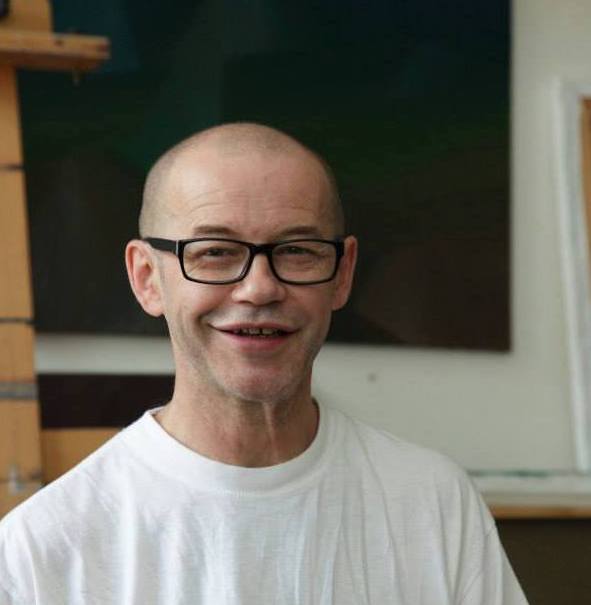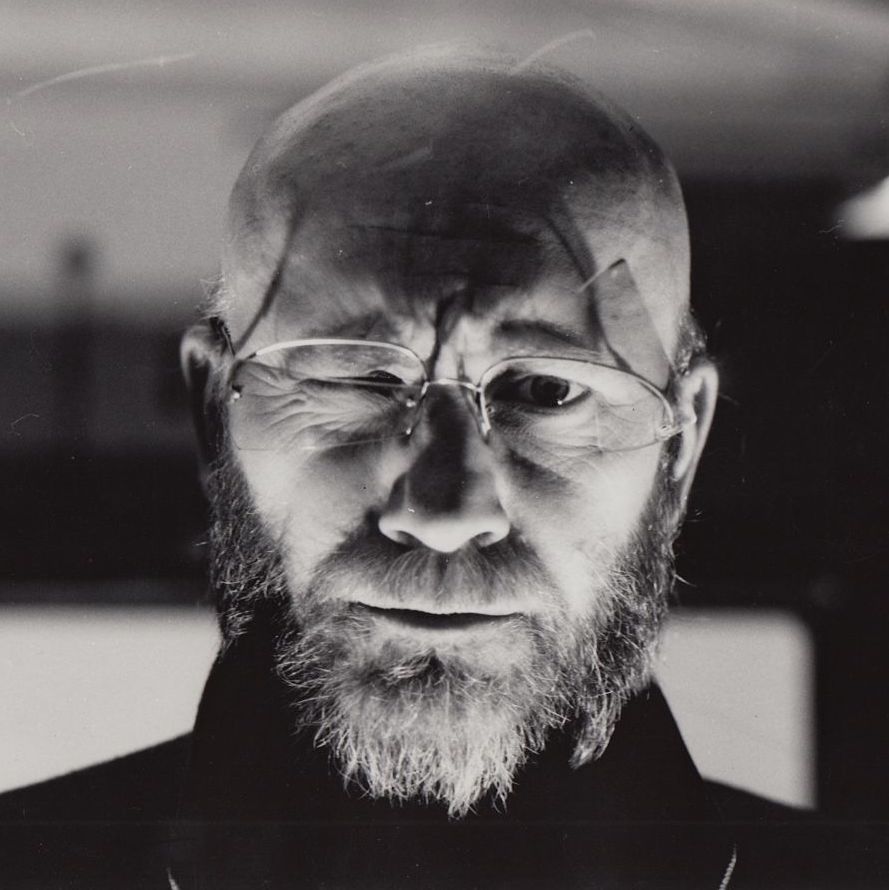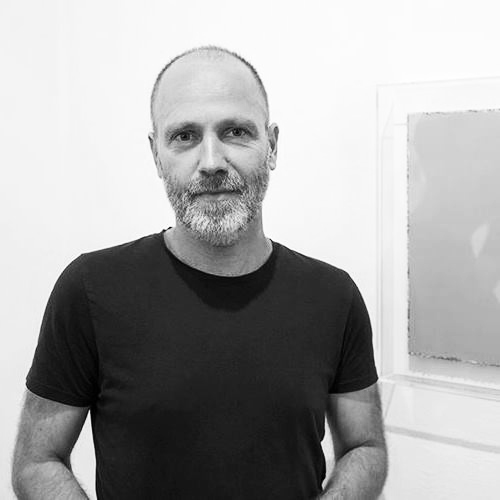
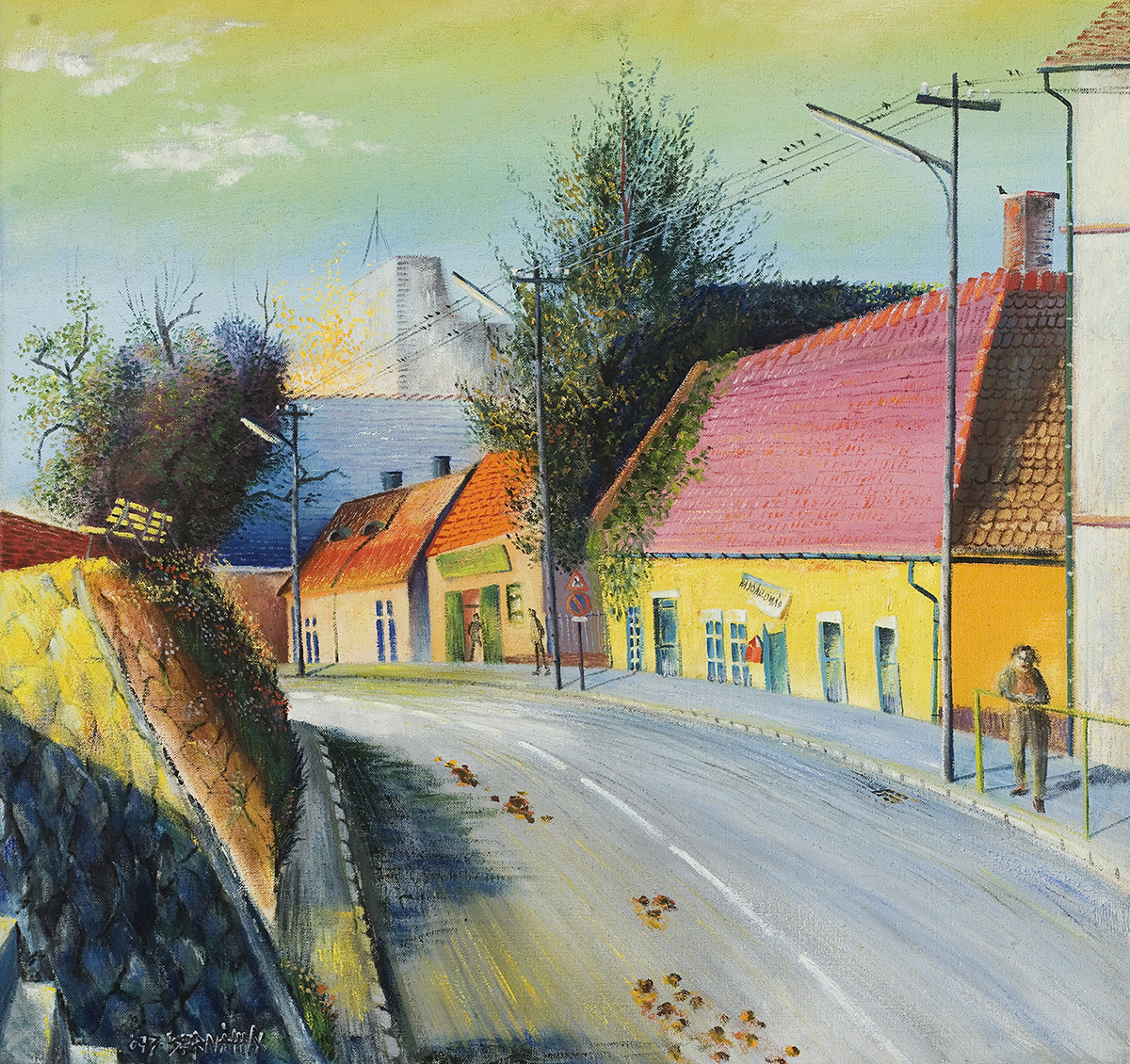
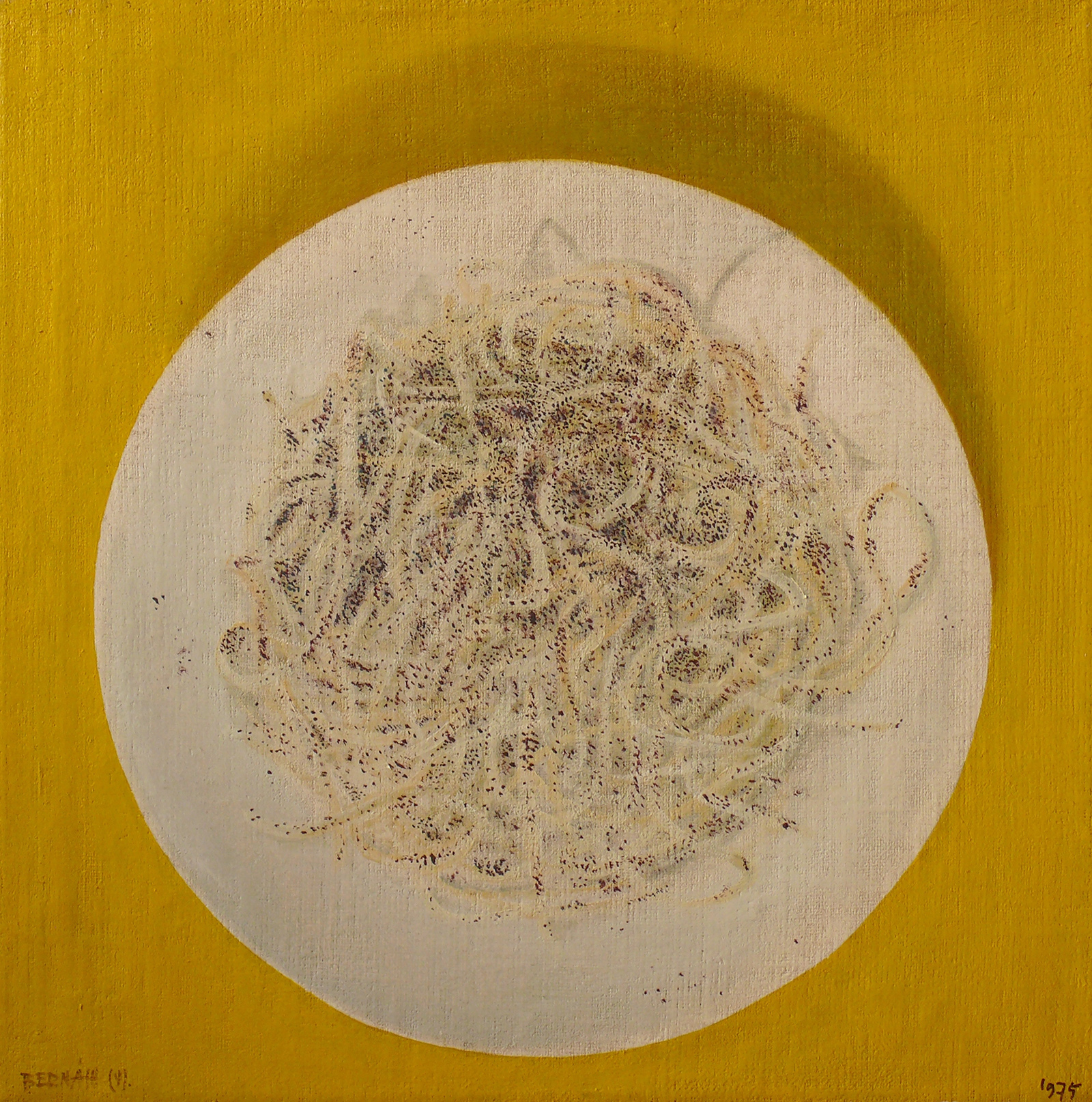


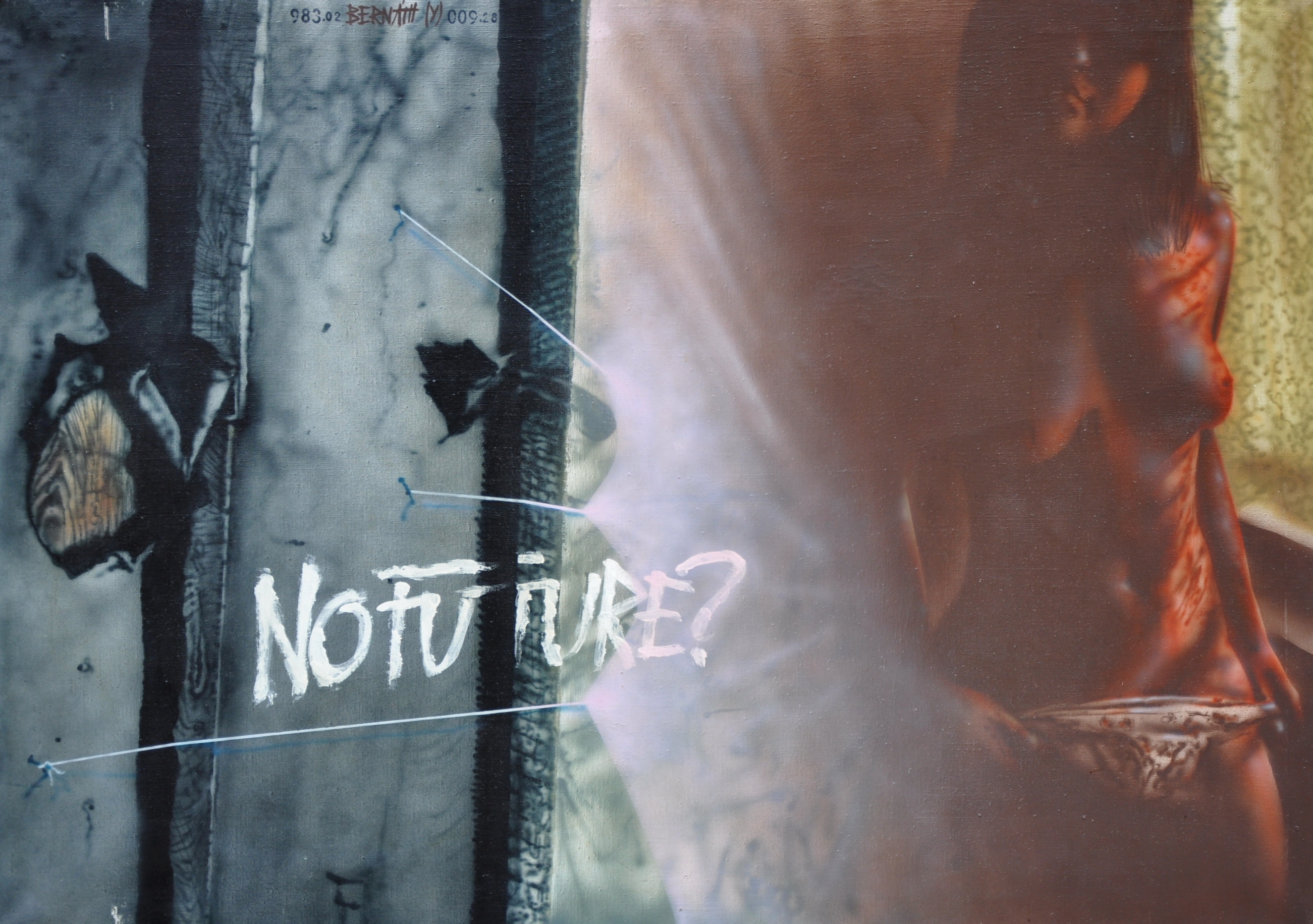
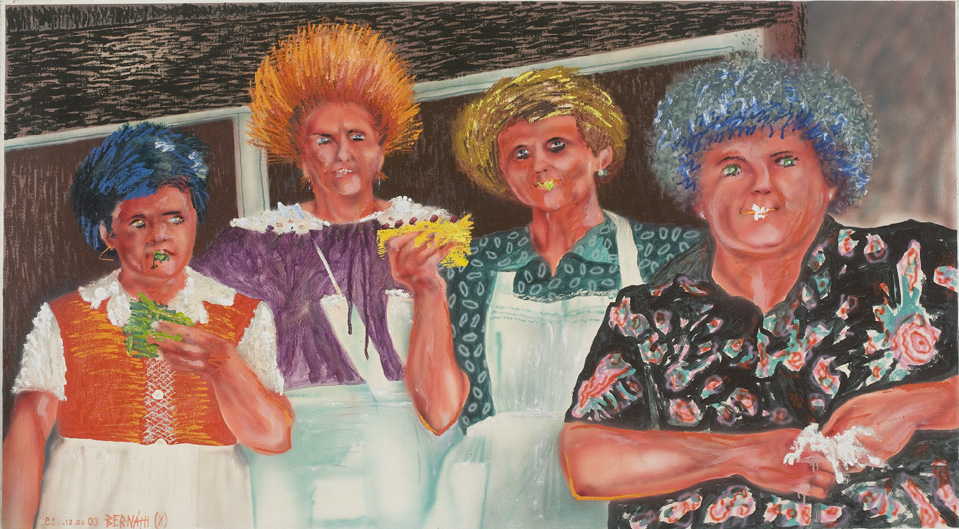
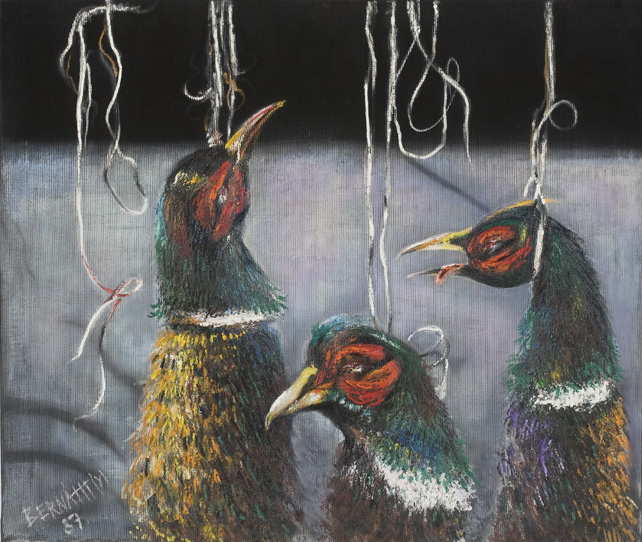
Bernath/y Sándor
(1949, Szilhalom - 2012, Budapest)A hazai avantgárd képzőművészeti és zenei életnek a hetvenes évek közepétől meghatározó alakja. Pályafutását autodidakta festőként kezdte, szabadiskolákban tanult, többek között Fajó Jánosnál. Eleinte Csontváry és Bosch által inspirált képeket, parafrázisokat festett, e mellett objekteket, kísérleti fotográfiákat, rendszerkritikus képregényeket, performanszokat, Bukta Imrével majd a VLS tagjaival tájművészeti akciókat csinált. 1977-ben tagja lett a Leninvárosi Kísérleti Műhelynek, majd a Vajda Lajos Stúdiónak. 70-es évek közepétől talált rá saját grosztekt, kritikai élű stílusára, melyet szocialista yrealistának nevezett el: napilapokban talált fotókat festett felnagyítva, a rossz, színhibás nyomdatechnika kinahgysúlyozásával átértelmezve azokat (Édesbrigád sorozat, 1979; Ki ismer rájuk - ki tud róluk? 1982). Festői stílusa később lazábbá, expresszívebbé vált, majd misztikusabb irányba fordult (AstroMythoPorno sorozatok).
Művészi pályáját valójában folyamatos kísérletezés, megújulás jellemezte, a zene, a színház, az irodalom, a képzőművészet és performansz határterületein alkotott, összművészeti eseményeket szervezett. Tagja volt a Fölöspéldány kísérleti irodalmi csoportnak, szerkesztőségi tagja az Új Hölgyfutár és a Gépszava magazinoknak. Fiatal korától több szállal kötődött az alternatív zenei élethez, plakátokat és lemezborítókat (Beatrice, Bikini) tervezett, alapító tagja volt az A. E. Bizottságnak, majd a Dr. Újhajnal, a Matuska SIlver Sound, a Szkárosi & Konnektor Rt. zenekarokban játszott, később pedig a hazai techno kultúra egyik vezéregyénisége lett. 2011-ben Munkácsy Mihály díjat kapott.
(Márkus Eszter)
He was a significant figure in the Hungarian avant-garde art and musical scene from the mid 70s. He began his career as an self-educated painter, then studied at various independent alternative schools such as that of János Fajó. In the beginning his paintings were paraphrases or pictures influenced by Hieronymus Bosch and Tivadar Csontváry, beside which he also made objects, experimental photography, political comic strips, performances and land-art actions with Imre Bukta and the members of the Vajda Lajos Studio (VLS). He became a member of the Leninváros Kísérleti műhely (Experimental Workshop of Leninváros) in 1977, then joined the VLS. In the mid 70s he started to establish his very own grotesque, critical style that he named “Socialist Yrealist”: he painted enlarged versions of photographs found in daily newspapers, reinterpreting them by emphasising the bad quality and the wrong colour-effects of the cheap printing (Sweet Brigade series, 1979; Who recognizes them - who knows about them? 1982). His style became looser and more expressive with time, then turned to a more mystical direction (AstroMythoPorno series). In fact, his artistic career was marked by continuous experimenting and renewal, he worked on the borderland of music, theater, literature, visual arts and performance, organizing numerous “total art” events. He was a member of the experimental literary group Fölöspéldány, editorial member of the magazines Új Hölgyfutár and Gépszava. From the beginning he was tightly associated with the underground music scene. He designed posters and album covers (for the bands Beatrice and Bikini among others), he was a founding member of A. E. Bizottság, and later on he played in several other bands, like Dr. Újhajnal, Matuska Silvester Sound and Szkárosi & Konnektor Rt. He was one of the leading figures of the Hungarian techno scene. He was awarded the Munkácsy Mihály Prize in 2011.
(Eszter Márkus)

Neon Galéria
Kedd – Péntek 14h – 18h
Tuesday – Friday 2pm – 6pm
Tuesday – Friday 2pm – 6pm

